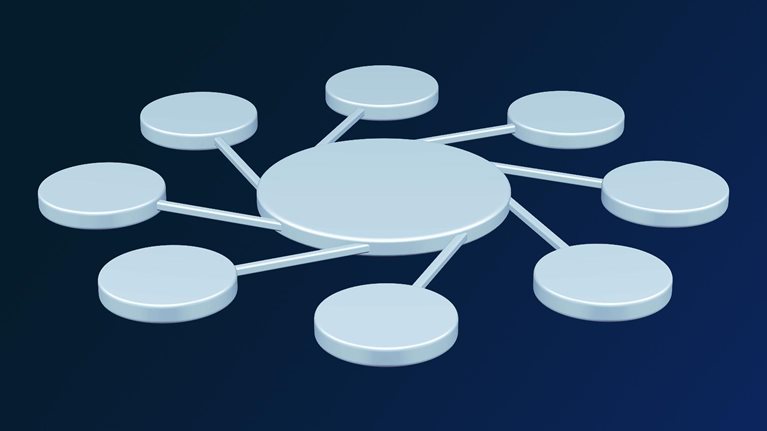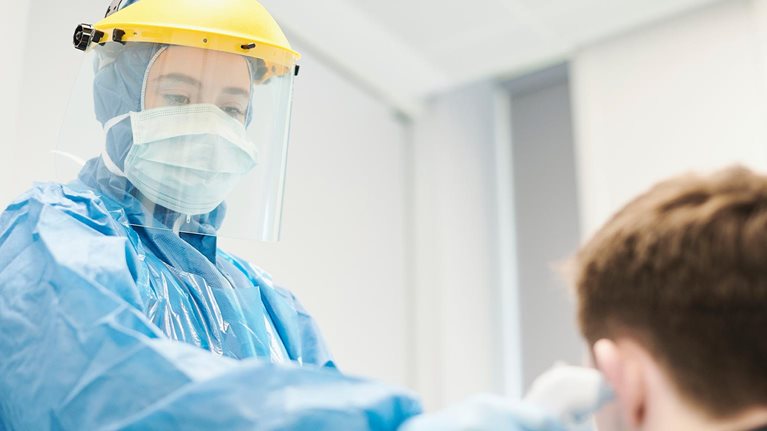Since the onset of the coronavirus pandemic, government officials, epidemiologists, and healthcare providers have scrambled to gauge the magnitude and speed of the spread. Policy makers have used data and analytics to extract insights and craft interventions. With so much data available, the trick has been to ensure this information is aggregated and shared across federal and state governments.
Farzad Mostashari is well versed in the power of data in healthcare. Having begun his career at the Centers for Disease Control’s Epidemic Intelligence Service, he went on to serve as the national coordinator for health-information technology at the US Department of Health and Human Services during the Obama administration before becoming co-founder and CEO of Aledade, which operates accountable-care organizations across 27 states. In a video discussion with McKinsey’s Adi Kumar on April 19, Mostashari discussed why syndromic surveillance has been critical in tracking the virus, why frontline healthcare practices are struggling, and why testing and contact tracing will define the next normal. A condensed and edited version of Mostashari’s remarks follows.
An early-warning system for COVID-19
Most public-health surveillance relies on people being diagnosed with a condition, a lab doing a test, or a doctor making a diagnosis. The laboratory or the physician then makes a report to a health department. We realized that, particularly for new diseases, the lab may not have a test for them, as was the case with COVID-19, and physicians may not understand what exactly is going on.
The technique we came up with originally was developed for massive outbreaks due to bioterror agents, pandemics, and influenza. We thought that instead of tracking diagnoses, let’s focus on illnesses and symptoms—the number of people going to the emergency room or their doctor or calling an ambulance for difficulty breathing, cough, or fever.
If you apply statistical techniques, cluster detection, temporal spatial scans, and so forth, you can actually detect pretty small increases on a citywide level. That can be your first indication that something needs to be investigated further. The process of getting access to ongoing data streams, applying statistical methodologies, and figuring out how to respond and investigate became known as syndromic surveillance.
This approach really took off after the September 11 and anthrax attacks. And you’re seeing it now more and more. In the White House daily coronavirus briefings, they are talking about influenza-like illness at the syndromic sites and using this information to make real decisions.
Data collection and development of the system
There’s already a lot of data being collected administratively. If an ambulance is being dispatched or a patient is being registered at an emergency room, there’s data being collected. So let’s just tap into that data stream and use it, modify it, do groupings, and natural-language processing.
Healthcare administrative systems are becoming electronic. When you buy something at the pharmacy and it goes beep, that’s a transaction. So let’s monitor transactions across society. Gathering this data was the first phase.
The second phase was that we were spending $28 billion to wire up doctors and hospitals as part of the 2009 American Recovery and Reinvestment Act. One of the things that we spent the money on was making sure that we got better data. Not just data collected but also data transmitted to public health for syndromic surveillance, electronic lab reporting, and immunization. So that data is now much, much cleaner. It’s much more clinical, and it’s much more available. We now have the vast majority of hospitals in the country reporting their daily emergency-room visits to public health. That has turned out to be the key tool in tracking this outbreak.
Collaboration between federal and local governments
When I was in New York City, at the Department of Health and Mental Hygiene, the Bush administration wanted to nationalize syndromic surveillance under a program called BioSense. We thought, “You don’t understand what’s going on in our regions, and you can’t investigate. We’re the boots on the ground, and knowing the local area makes us better at surveillance.”
We pushed this framework for distributed surveillance, where the data is collected in more or less standardized ways. The results are aggregated, but the line-level data stays at the state and local levels.
That model has worked. The CDC set up the technology, or catcher’s mitt. They created analytic tools. They can collate all this information. But each state and local health department has their locker on this Amazon Web Services infrastructure.
To me, that is the right model. The federal government provides support, standardization, visualization, and the ability to knit together all these findings. But fundamentally, the on–off switch is in the hands of the state and local health departments, and they decide what information gets shared.
Challenges for frontline healthcare practices
Everyone is talking about how bad it is for hospitals and how they’re running low on supplies. For frontline community primary-care practices, their supply chain is broken. They have people with a cough and fever coming into their offices, they want to care for their community, and they are getting infected and having to go into quarantine.
Therefore, they are telling their patients, “Stay home; don’t come into the office.” That means their fee-for-service revenue is evaporating, and they are having to lay people off. The healthcare sector was the second-largest sector, after leisure and hospitality, to lose jobs in March during the pandemic.
Those losses didn’t all come from hospitals; they came from outpatient practices. We are hollowing out our frontline primary-care practices at the time when we’re going to need them most to do diagnosis, testing, and treatment. We have heroic doctors who are doing swabs in the parking lot, porch visits, home visits, and televisits. They’re doing everything they can to keep serving their communities.
But they are going out of business, they are getting infected, and they are worried sick—not only about their families and communities but also their staff and their businesses. It is not a good situation. We’re doing everything we can to help our 550 practices and to carry this message forward that the rest of these practices need help too.
The journey to the next normal
The physical distancing that we all did is working. In many ways, it began with companies deciding to tell people to work from home, with conference organizers canceling, with individuals saying, “I am so scared, there is no leadership, and we’re just going to have to figure it out for ourselves.” The stay-at-home orders and the school-closing orders followed. So that’s good. The infection has definitely slowed.
Next, we can reclaim the ability to contact trace every positive case, identify their contacts, put them into quarantine, and use that to slow the spread while we develop therapies and ultimately vaccines. I think that’s going to happen. What I worry about is that we are going to see flare-ups such as what we saw in New York City: there was one week last month where New York City had the most deaths ever recorded in its history. And that includes 1917.
This is not flu. This is a serious threat to any state and city that takes it lightly. We need to be really, really vigilant. And my fear is that we will see more cities that are slow on the uptake or get complacent, and it rips through that city.
Comments and opinions expressed by interviewees are their own and do not represent or reflect opinion, policy, position, or endorsement of/by McKinsey & Company.


